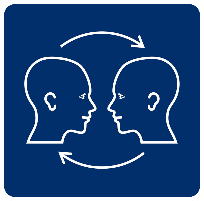Communication Access: The Australian journey and beyond
Session
Keynote
Plenary
-
- Denise West (Scope Australia)
- Brett Reynolds (Scope Australia)
- Barbara Solarsh (Scope Australia)
- Hilary Johnson (Scope Australia)
Summary
Communication Access means that everyone can get their message across. “Communication Access occurs when people are respectful and responsive to individuals with communication disabilities, and when strategies and resources are used to support successful communication” (Communication Resource Centre, Scope, 2013).
This keynote session presents the background, and examples of standards, criteria and processes developed in Australia for embedding communication access in our social environment. This session invites participants to share ideas and provide an international perspective to communication access. It will:
- Explain Communication Access and why it is important
- Describe the Australian journey so far, including the background and roll-out of the Communication Access Symbol and Initiative
- Explain the employment of Communication Access assessors and Disability Educators
- Outline the benefits to communities, services and businesses of becoming communication accessible.
Communication Access is the latest access symbol which has been embraced in Victoria Australia. Communities, services and businesses are now beginning to conceptualise access beyond the physical access. Businesses and services that have embraced the notion of communication access and many continue to seek new ways of improving access and customer service to people with disabilities. There are now a set of standards that represent communication accessible services. These standards are included in the registered trademark of the communication access symbol. Licensing Agreements will be developed to enable the rollout of this initiative outside of Victoria, Australia.
Additional resources can be downloaded from the Scope website. These can be found on http://www.scopevic.org.au/service/communication-access/
Level of Session
General
Age Group
All Ages
Interest
Primary school
Secondary school
Special school
Further/Higher Ed.
Adult
Transitions






